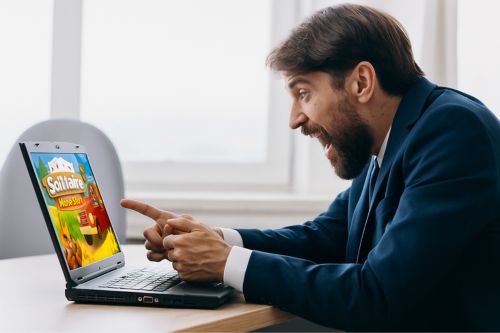Micro Breaks at Work: Small Pauses, Big Productivity

Discover how micro breaks at work boost focus, energy, and wellbeing. Learn their benefits, differences from Pomodoro breaks, and how to use them daily.
Taking breaks at different points of the day while working can be both a mind and body relief. Our culture often glamorizes long hours, but the truth is that nonstop focus drains us. Without recovery, we lose clarity, creativity, and even motivation to keep moving forward.
That’s where micro breaks come in. These tiny pauses—sometimes no more than two or three minutes—can refresh your mind and reduce physical tension. Rather than waiting until you’re burned out to rest, micro breaks act like mental pit stops that keep you sharp, energized, and sustainable throughout the day.
Micro Breaks at Work
Micro breaks at work are all about small actions that reset your brain and body without derailing productivity. Here are six examples:
Stretching at your desk: Just one minute of rolling your shoulders or standing up can ease stiffness and improve circulation.
Deep breathing: Four slow breaths in and out reduce stress and help calm your nervous system.
Looking away from the screen: Give your eyes a reset by focusing on a distant point for 20 seconds.
A quick walk: Even walking to refill your water bottle counts; it breaks the monotony of sitting.
Micro journaling: Write a single sentence about what you’re grateful for or what’s on your mind.
Mini-games: A round of Solitaire or a word puzzle can give your brain a fun reset before diving back into work.
These small actions are deceptively powerful: they don’t “waste” time, they restore it.
What Is a Micro Break?
A micro break is a short pause lasting between 30 seconds and five minutes, designed to relieve physical strain and refresh mental focus. Unlike traditional breaks, they fit naturally into the flow of work and don’t require stepping away for long periods.
A study published in the Journal of Applied Psychology [1] found that even micro breaks of less than two minutes improved employees’ energy levels and reduced fatigue over time. These mini-pauses provide the body with movement and the mind with recovery, which helps sustain performance across the day.
The beauty of micro breaks is that they’re flexible. Whether you’re sending a quick email, waiting for a file to load, or pausing between meetings, these “hidden moments” can be transformed into opportunities for micro restoration.
Difference Between Micro Breaks and Pomodoro Breaks
Micro breaks and Pomodoro breaks share the same goal—recharging focus—but they differ in structure. Micro breaks are spontaneous, lasting only a few seconds to minutes, while Pomodoro breaks are pre-scheduled within the 25/5-minute work rhythm.
For example, micro breaks might include standing up, stretching, or doing a breathing exercise between tasks. By contrast, Pomodoro breaks are planned, such as a five-minute walk, a short meditation, or brewing tea after 25 minutes of deep work.
Both methods complement each other. Pomodoro breaks impose discipline, while micro breaks encourage flexibility. Used together, they form a rhythm of focus and release that keeps the brain productive without risking exhaustion.
Why Are Micro Breaks Beneficial?
Micro breaks improve productivity, focus, and physical wellbeing. Research in Occupational Health Science [2] shows that short breaks during repetitive work reduce stress and prevent musculoskeletal strain. They’re not just about comfort—they’re preventive care.
Mentally, micro breaks provide cognitive recovery. They give your brain the chance to reset, boosting problem-solving skills and creativity when you return. Employees who incorporate micro breaks report higher job satisfaction and lower burnout.
Finally, these pauses signal to yourself that rest is not laziness but strategy. Taking frequent, intentional micro breaks allows you to sustain energy throughout the day, instead of burning out in the afternoon slump.
My Go-To Micro Break
Whether I’m taking a long break or a micro break, I always make time for reading or playing a quick game of Solitaire.
For me, Solitaire is the perfect balance between relaxation and mental stimulation. A fast round is enough to clear my head, while a longer session lets me sink deeper into focus.
I especially enjoy Solitaire Home Story. For short breaks, I’ll play a quick and easy hand to earn a star for the next level—just a few minutes and I’m refreshed.
But when I have more time, I dive into helping Alice renovate her home, enjoying the storyline and the cozy sense of progress.
What makes it even better is that the game saves your progress seamlessly, so whether you log in for two minutes or thirty, you can always pick up where you left off.
In the end, Solitaire—whether quick or extended—reminds me that breaks aren’t about stopping. They’re about recharging so I can keep going with more focus and less stress.
References
[1] Author(s). (Year). Daily micro-breaks in a self-regulatory resources lens: Perceived health ... X-MOL. Retrieved [Access Date], from https://www.x-mol.net/paper/article/1417084066788823040
[2] Taylor, C. (2025, June 19). Small breaks, big impact: How microbreaks improve safety and performance. Occupational Health & Safety. Retrieved [Access Date], from https://ohsonline.com/articles/2025/06/19/microbreaks-improve-safety-and-performance.aspx?
